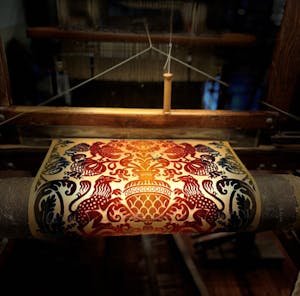
The Lisio Foundation Manufacture continues to draw from the historical archive, proposing new color and structure experiments, creating each time absolutely unique and contemporary fabrics.
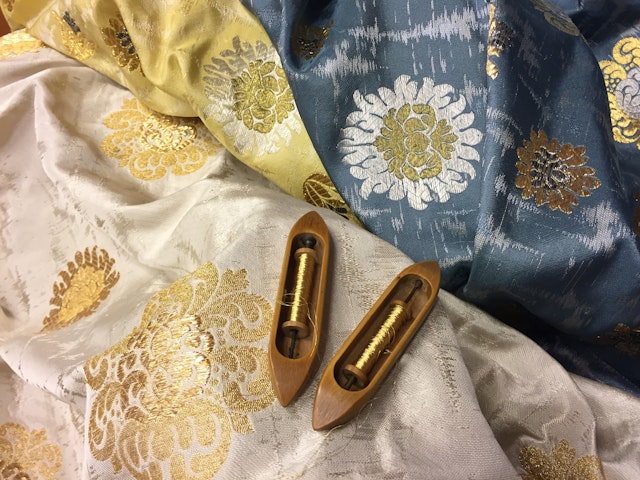
‘Veronese’ Brocade
- Composition: silk; gold; silver
- Woven on a late 19th-century hand-operated Jacquard loom
- Width: 130 cm
Production of the ‘Veronese’ fabric, which proposes both the technique and the design of a mid-17th century sample, began in 1915 ca. From the 17th-century model, taken from Paolo Veronese’s painting of Justice in Palazzo Ducale in Venice, Lisio faithfully transcribed both the compositive layout and the larger and smaller elements, placed on the diagonal to lend movement to the pattern. The changes made were enlargement of the ratio of the design, delineating the motifs only with brocading in two types of gold and silver, and use floats of the ground weft and a lancé effect in substitution of the lamella that covered the ground and produced plays of light with to obtain a very successful iridescent effect.
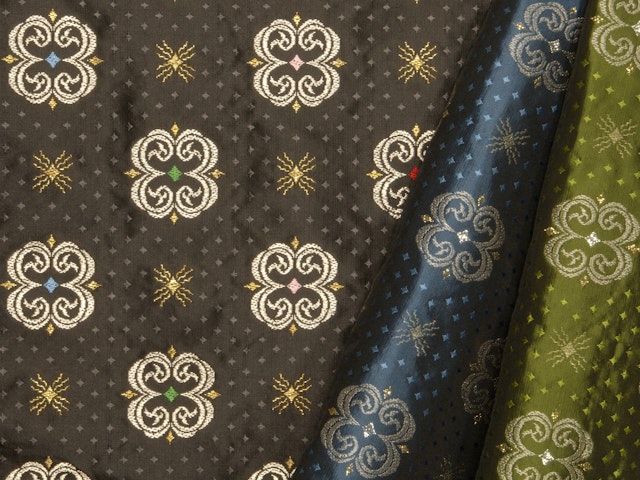
‘Agnolo’ Brocade
- Composition: 65 % silk; 35 % gold/silver
- Woven on a late 19th-century hand-operated Jacquard loom
- Width: 60 cm
This brocade was produced for the first time in the late 1930s. Its inspiration traces back to the mantle of the Virgin in Agnolo Gaddi’s Coronation of the Virgin (at the National Gallery of London). Fondazione Lisio still weaves this fabric, with its simple, elegant design whose efficacy derives from the colour variations of the brocaded wefts and the luminous effects of the background, on its hand-operated looms.
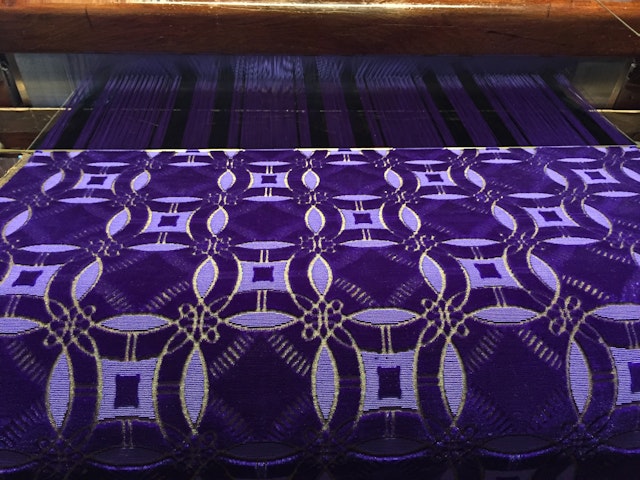
‘San Marco’ Velvet
- Composition: ground and pile warps in 100% silk, wefts in 100% silk and in gold
- Woven on a late 19th-century hand-operated Jacquard loom
- Width: 60 cm
Giuseppe Lisio’s ‘San Marco’ velvet, with its complex geometric design based on interlocking circular figures taken from a floor mosaic in one of the world’s most beautiful churches – Saint Mark’s Cathedral in Venice – was woven for the first time in 1926 ca. Produced by the sophisticated ciselé technique, which juxtaposes the different lights of looped and cut piles, it is ideal for exalting the forms of modern and contemporary furnishings.
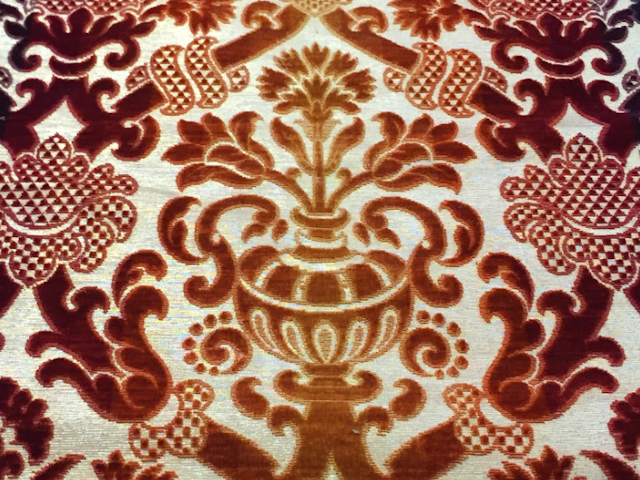
‘Palio I’ Velvet
- Composition: ground and pile warps in 100% silk, wefts in 100% silk
- Woven on a late 19th-century hand-operated Jacquard loom
- Width: 60 cm
The design of this velvet, woven in two variants, faithfully reproduces a typical 16th-century velvet produced in Florence for an entire century, beginning in the mid-1500s. The ‘Palio I’ velvet was set up on the loom by Giuseppe Lisio for the first time in 1925.
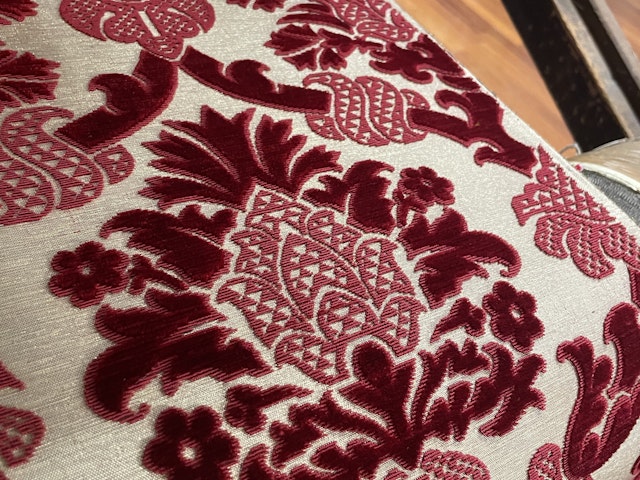
"Palio II" Velvet
- Composition: ground and pile warps in 100% silk, wefts in 100% silk
- Woven on a late 19th-century hand-operated Jacquard loom
- Width: 60 cm
The pattern of this velvet, created in two variants, faithfully reproduces that of a typical 16th-century velvet manufactured in Florence for an entire century, beginning in the mid-1500s. Many ecclesiastical textiles with the motif are conserved to this day in and around Florence.
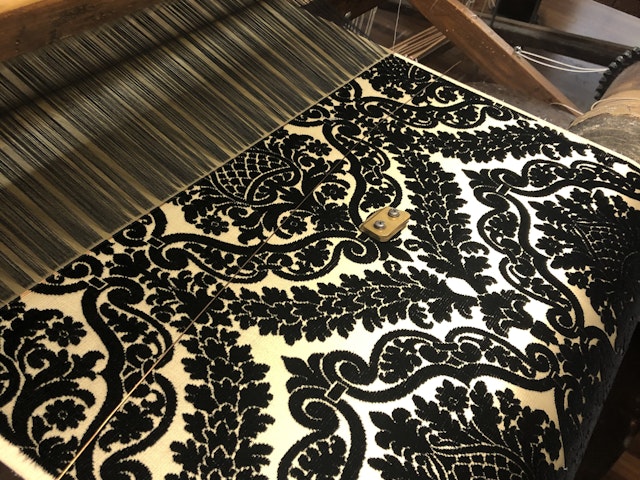
"Pigna" Velvet
- Composition: ground and pile warps in 100% silk, wefts in 100% silk
- Woven on a late 19th-century hand-operated Jacquard loom
- Width: 60 cm
The pattern of this velvet is typical of many of the 16th century silks conserved in various museums. In this specific case it is taken from an original fragment of the antique textile collection belonging to the founder of the firm, Giuseppe Lisio. It is very similar to another longer piece conserved in the Museo Nazionale del Bargello in Florence dated about 1530.
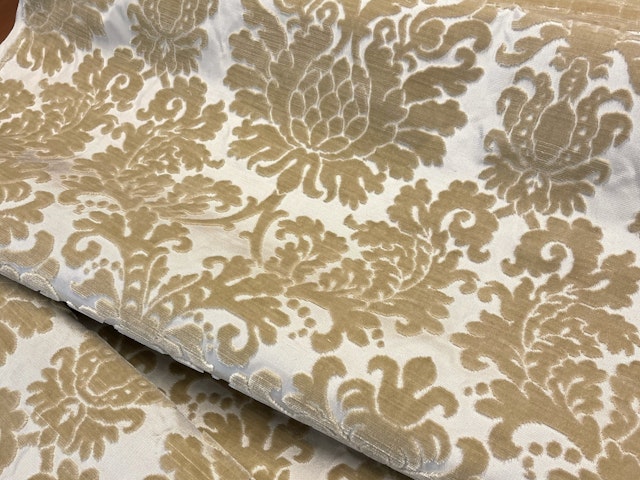
"Chigi" Velvet
- Composition: ground and pile warps in 100% silk, wefts in 100% silk
- Woven on a late 19th-century hand-operated Jacquard loom
- Width: 60 cm
This velvet represents a design in the baroque style, the structure of which still retains some of decoratif forms of the renaissance. It is suitable for covering period furniture but can also enrichen in a magnificant way modern furniture with its simple, clean lines.
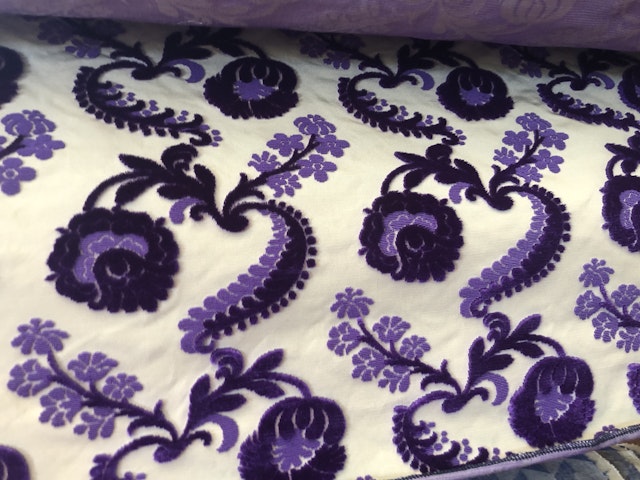
"Parisina" Velvet
- Composition: ground and pile warps in 100% silk, wefts in 100% silk
- Woven on a late 19th-century hand-operated Jacquard loom
- Width: 60 cm
This velvet, created in the late 1920s, takes up the design of brocade fabrics popular in Italy around the middle of the XVII century. The Lisio Manufacture has produced both the brocade variant and the richer one in velvet. The name Giuseppe Lisio gave to this fabric is probably a tribute to his friend Gabriele d'Annunzio, author of the libretto of the opera “Parisina” by Pietro Mascagni.
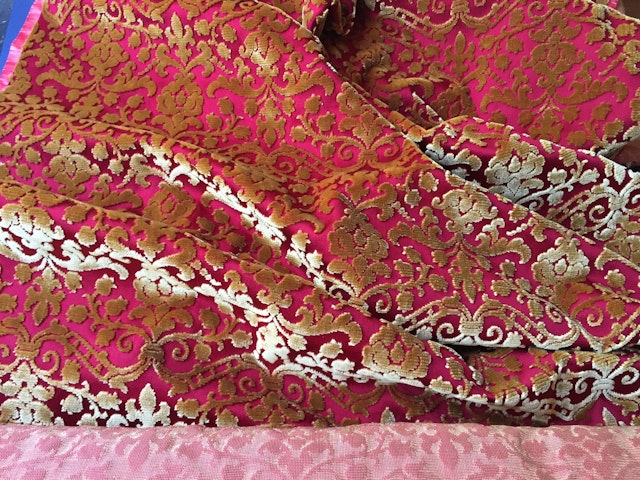
‘Gigliato’ Velvet
- Composition: ground and pile warps in 100% silk, wefts in 100% silk
- Woven on a late 19th-century hand-operated Jacquard loom
- Width: 60 cm
The elegance of this velvet produced by Lisio beginning in 1928 ca. derives from the perfect harmony of the various elements of the design with each other and with the ground. The motifs are placed horizontally as was characteristic of the fabrics of the first half of the 17th century: some of these, such as the stippled, sinuous trunks, belong to the late 16th-century repertory while others, like the small cornucopias or the stylised lilies, are in full-blown Baroque style.
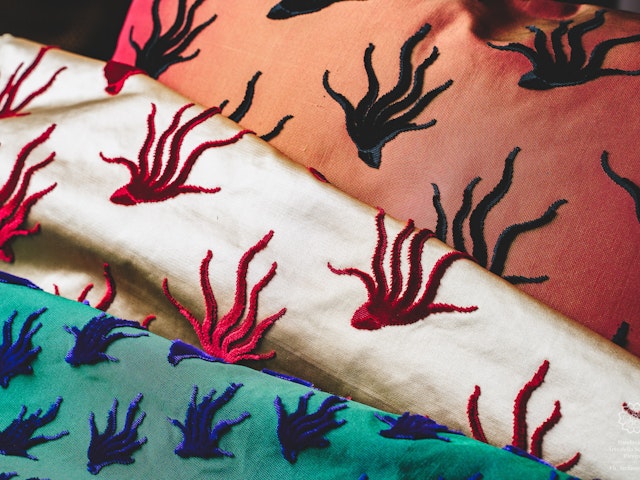
"Mercurio" Velvet
- Composition: ground and pile warps in 100% silk, wefts in 100% silk
- Woven on a late 19th-century hand-operated Jacquard loom
- Width: 60 cm
In Botticelli’s famous painting Primavera, Mercury is clothed in a red fabric decorated with motifs of diamonds and flames, Medici-family heraldic devices. This fabric was manufactured for the first time by Giuseppe Lisio in 1914 ca.
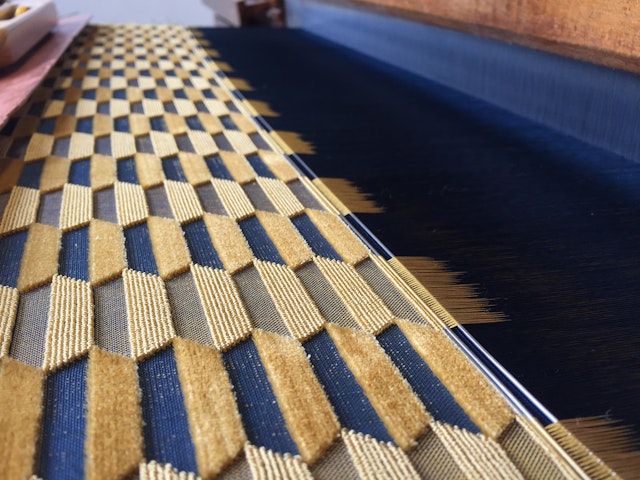
‘Scaccato’ Velvet
- Composition: ground and pile warps in 100% silk, wefts in 100% silk
- Woven on a late 19th-century hand-operated Jacquard loom
- Width: 60 cm
A simple but exceedingly elegant design that has traversed the centuries without losing anything of its allure: the motif is ‘borrowed’ from an 16th-century damask; the ‘Scaccato’ velvet proposes the same pairing of two shades of the same colour seen in the original sample.
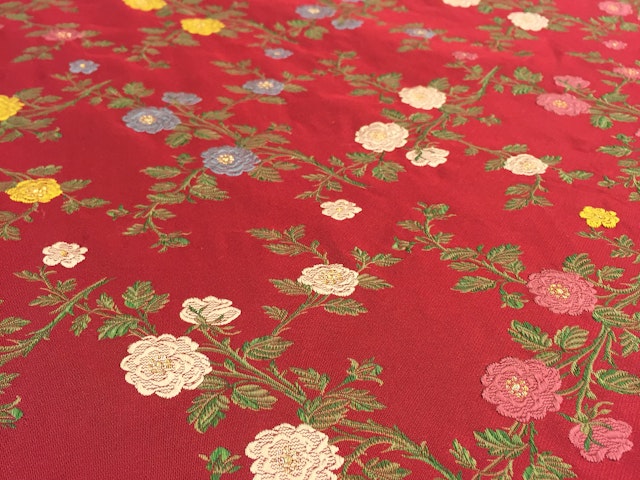
"Roselline" Brocade
- Composition: silk; gold; silver
- Woven on a late 19th-century hand-operated Jacquard loom
- Width: 130 cm
This brocade was produced for the first time by Giuseppe Lisio in the late 1920s. It reproduces a fabric of the middle of XVIII century, where the flowers are outlined with a naturalistic intent, while the compositional structure called «a meander », fashionable in the silks of this period. The "Roselline" brocade is an elaboration of the original "Rose", described above, created in 2013.
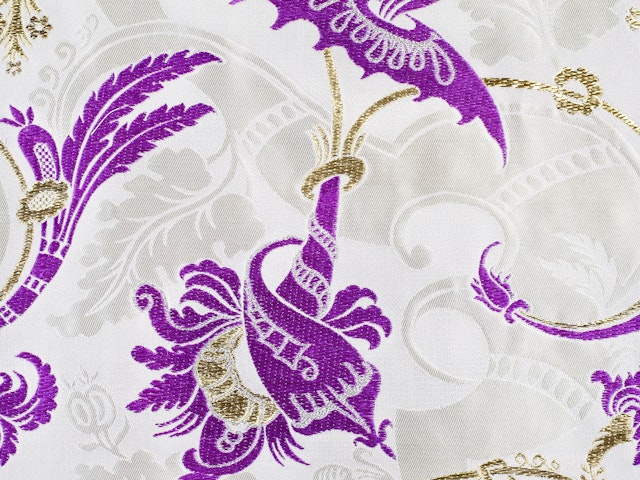
"Samurai" Brocade
- Composition: silk; gold; silver
- Woven on a late 19th-century hand-operated Jacquard loom
- Width: 120 cm
This brocade was produced for the first time by Giuseppe Lisio around 1915-1920. The pattern reproduces a fabric called "bizarre" in fashion in the early XVIII century, when the suggestions of the Far East permeate European art and arise a flourishing of exotic themes on all artifacts. Like the models, our "Samurai" is in brocade damask, a technique with which it is possible to create decorative effects on several levels of depth, imparting extreme lightness and strong dynamism to the whole.
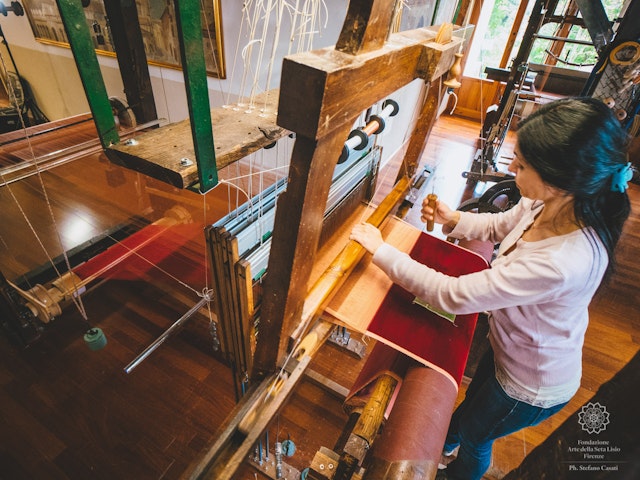
Our Hand Weaving in silk
We weave our fabrics only on hand-operated Jacquard looms. The weaver’s hand is fundamental to fabric creation: punctilious attention to design, selection of the precious yarns and precise workmanship are the elements that set our manufactory apart and make all our products exclusive examples of artisan excellence.
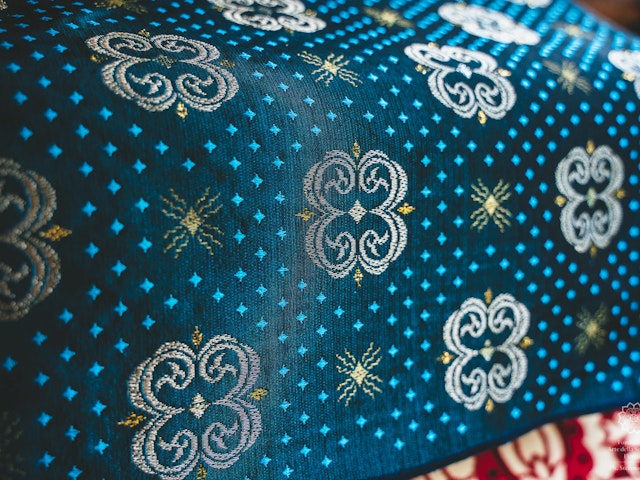
Our Exclusive Distributors
Our fine fabrics are available abroad at "Turnell & Gigon", our exclusive distributor for United Kindom, and "Marcello Boss" our agent in United States.

